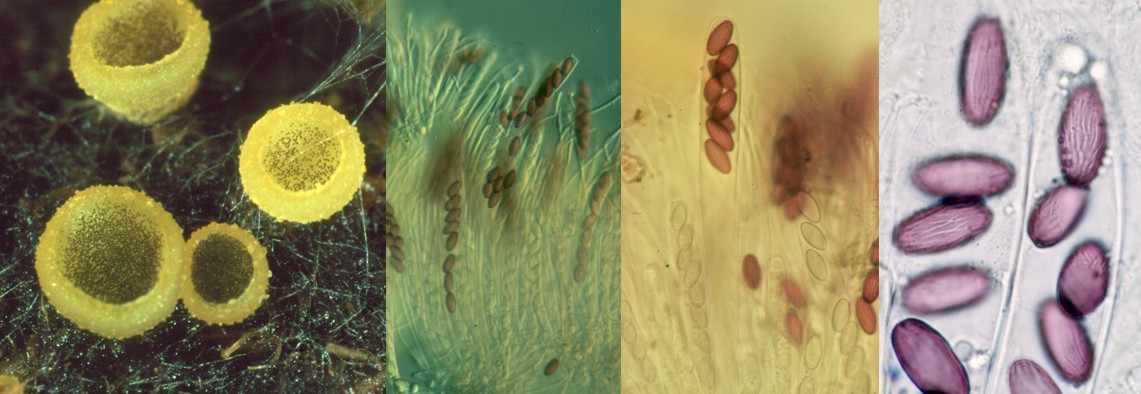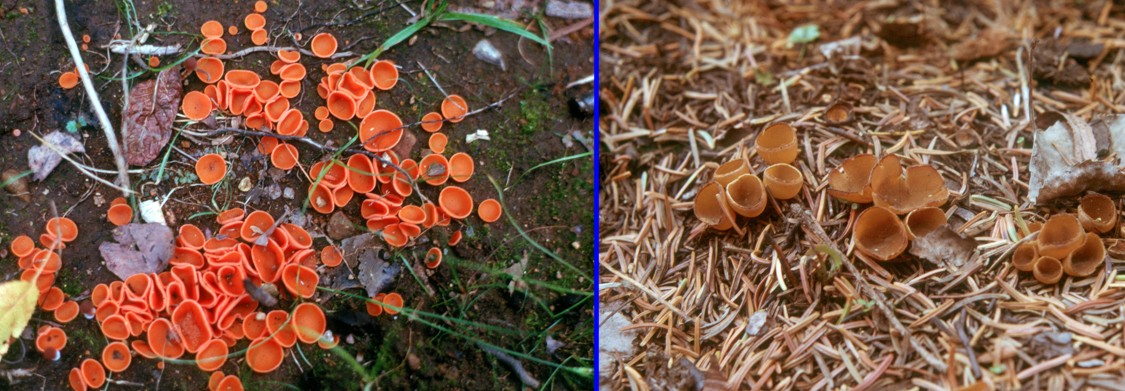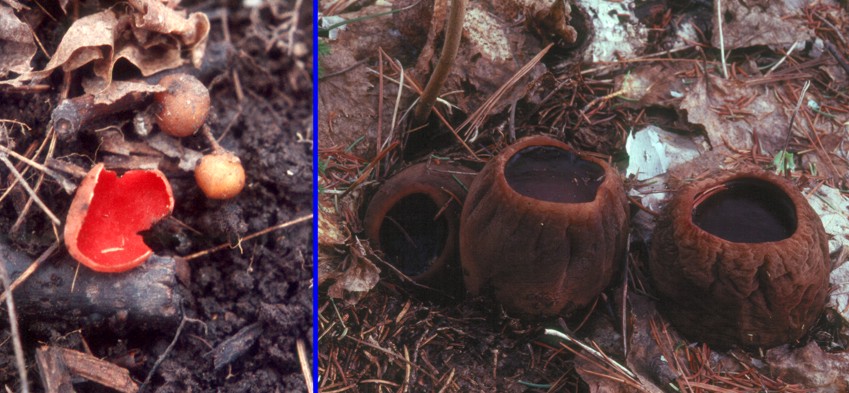Home >> Diversity and classification >> True fungi >> Dikarya >> Ascomycota >> Discomycetes >> Operculate Discomycetes >> Sessile Operculate Discomycetes
SESSILE OPERCULATE DISCOMYCETES

Sessile operculate discomycetes range in size from quite minute to very large. At the small end of the scale are species found on soil, dung and charcoal. The picture above shows two species of Ascobolus, a common genus of dung-inhabiting discomycetes. The three panels at left are increasingly magnified views of A. crenulatis. In the leftmost panel are apothecia growing on dung. The surface of the apothecia are peppered with dark dots marking the position of the asci and their dark purple ascospores. The next panel to the right is from a cross section of one apothecium. Here you can see the individual asci, each with eight spores, nested among the filamentous paraphyses. The panel third from the left shows an individual ascus clearly containing eight ascospores. Finally, in the right panel, is a close-up of an ascus and ascospores of Ascobolus stercorarius photographed in white light and showing the beautiful purple ascospores typical of Ascobolus and the related genus Saccobolus. Also apparent in this picture are the grooves in the wall of the ascospores. Most species of Ascobolus have some sort of markings on the walls of their ascospores. These markings may be ridges, warts or spines, or the spore wall may be entirely smooth.

Aleuria aurantia, the species illustrated above left, is common in autumn throughout our area on recently disturbed soil. Commonly called the "Orange peel fungus", it often appears on gravel roads where it would appear to have no obvious source of nutrients. The fungus above right is Geopyxis carbonaria, a specialist on recently burned areas. Although the soil in the picture appears not to be burnt there had been a fire there two years earlier and G. carbonaria was exceedingly abundant.

The two fungi at right represent members of two interesting families of operculate discomycetes, the Sarcoscyphaceae and the Sarcosomataceae. Members of both families are most often seen in the early spring in our area, long before many larger fungi have appeared. Sarcoscypha coccinea, in the leftmost panel is found on hardwood sticks beneath the fallen leaves from the previous autumn. The apothecia begin to form in the late autumn but do not mature until spring. The two round objects beside the apothecium are tubers of squirrel-corn, produced by Dicentra canadensis a plant similar to Dutchman's breeches. The fungus in the right panel is Sarcosoma globosa. This unusual cup fungus occurs under large old spruce trees, often following the path of their roots. It has an apothecium that is set into the top of a round soft ball. The ball is filled with a jelly-like substance derived from highly gelatinized hyphae. The dark colour and jelly-like interior may absorb and retain heat, allowing the ascospores to mature more quickly than they would in more conventional fungi. Both the Sarcoscyphaceae and the Sarcosomataceae also include species with stipitate ascomata. These can become abundant in the tropics. Use your web browser to search for images of Cookeina sulcipes a striking species that even made it to the cover of National Geographic Magazine.